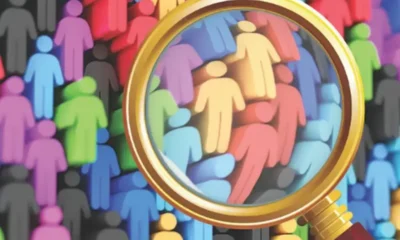At age seven, he watched his father break a bottle over his mother’s head. At ten, he was setting fires. By sixteen, he stopped crying. By twenty-three, he was on trial for murder.
She was nine when her older cousin began “games” that weren’t games. No one believed her, including her parents. Shame became silence. Trust rotted into rage. By adulthood, she couldn’t form attachments. One night, when a person triggered memories she’d spent years burying, that rage took a life.
His father was a narcissist who humiliated him for crying. He called him weak and dramatic. So he buried his feelings deep—and wore a mask of perfection. But repression sn’t a resolution. By his late twenties, his partner’s criticism triggered old wounds. He didn’t react with words. He reacted with a kitchen knife.
These are not the plot of a crime drama. It’s a psychological blueprint repeated more often than we’d like to believe.
Not all violence begins with blood—most of them begins with pain. Beneath the headlines of brutal crimes and cold-blooded killers lies a less-publicized truth: a staggering majority of those who commit extreme acts of violence have themselves been victims first.
A 2017 study on incarcerated populations revealed that 87.3% of women and 83.3% of men behind bars had suffered significant trauma, often during childhood. This is not an anomaly—it is a disturbing pattern. Trauma, especially when experienced in youth, can rewire the brain, disrupt emotional development, and—in some cases—contribute to the emergence of psychopathic traits.
When the System Fails First
Society tends to view killers as aberrations—soulless anomalies that erupt without warning. But in reality, many of them are the inevitable product of sustained neglect, abuse, and systemic failure. Our social systems are too often reactive, not preventive. By the time a person commits a heinous act, the damage has been accumulating for years.
Public institutions meant to serve as early safety nets—schools, child protective services, community health programs—are chronically underfunded or overwhelmed or feels the subject out of curriculum. Educators are trained to discipline, not lecture. Social workers are stretched thin. And mental health services remain inaccessible for many who need them most.
Psychopathy doesn’t emerge in a vacuum. It is cultivated when early trauma goes unaddressed, when pain is met with punishment, and when warning signs are misread as delinquency instead of distress.
The Cost of Ignoring the Roots
Our justice system focuses heavily on what someone did, rarely asking why they became capable of it. This limited lens perpetuates cycles of violence rather than dismantling them. By overlooking the psychological origins of criminal behavior, we allow trauma to metastasize—often with deadly consequences.
If society continues to criminalize symptoms without treating causes, we will remain locked in a loop of retribution over rehabilitation.
What Needs to Change
To prevent this kind of violence, we must recognize the psychological infrastructure that supports it. This means:
- Integrating trauma-informed practices into education, policing, and healthcare.
- Universal access to mental health care, starting in early childhood.
- De-stigmatizing therapy and emotional vulnerability, particularly for boys and men.
- Policy reforms that prioritize intervention over incarceration.
Early support doesn’t just save lives—it prevents them from being lost in the first place, whether to murder, prison, or untreated mental illness.
This isn’t just about violent individuals. It’s about a violent pattern embedded in our social fabric—one we can only break by addressing trauma at its roots, not at its aftermath.
Understanding more about the Criminal Mind
For those who want to go deeper into how trauma shapes the psychology of killers, Killer Instinct: The Mind of a Man Before Murder offers a chilling yet insightful examination of real-life criminal minds. It explores the motivations, disorders, and buried traumas behind some of the darkest crimes—because understanding is the first step toward prevention.

 Culture & Society2 months ago
Culture & Society2 months ago
 Culture & Society2 months ago
Culture & Society2 months ago
 Tech2 months ago
Tech2 months ago
 Opinion2 months ago
Opinion2 months ago
 Business2 months ago
Business2 months ago
 Culture & Society2 months ago
Culture & Society2 months ago
 Culture & Society2 months ago
Culture & Society2 months ago
 iNational Indic2 months ago
iNational Indic2 months ago














